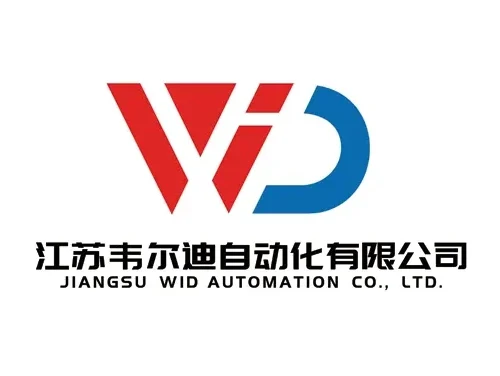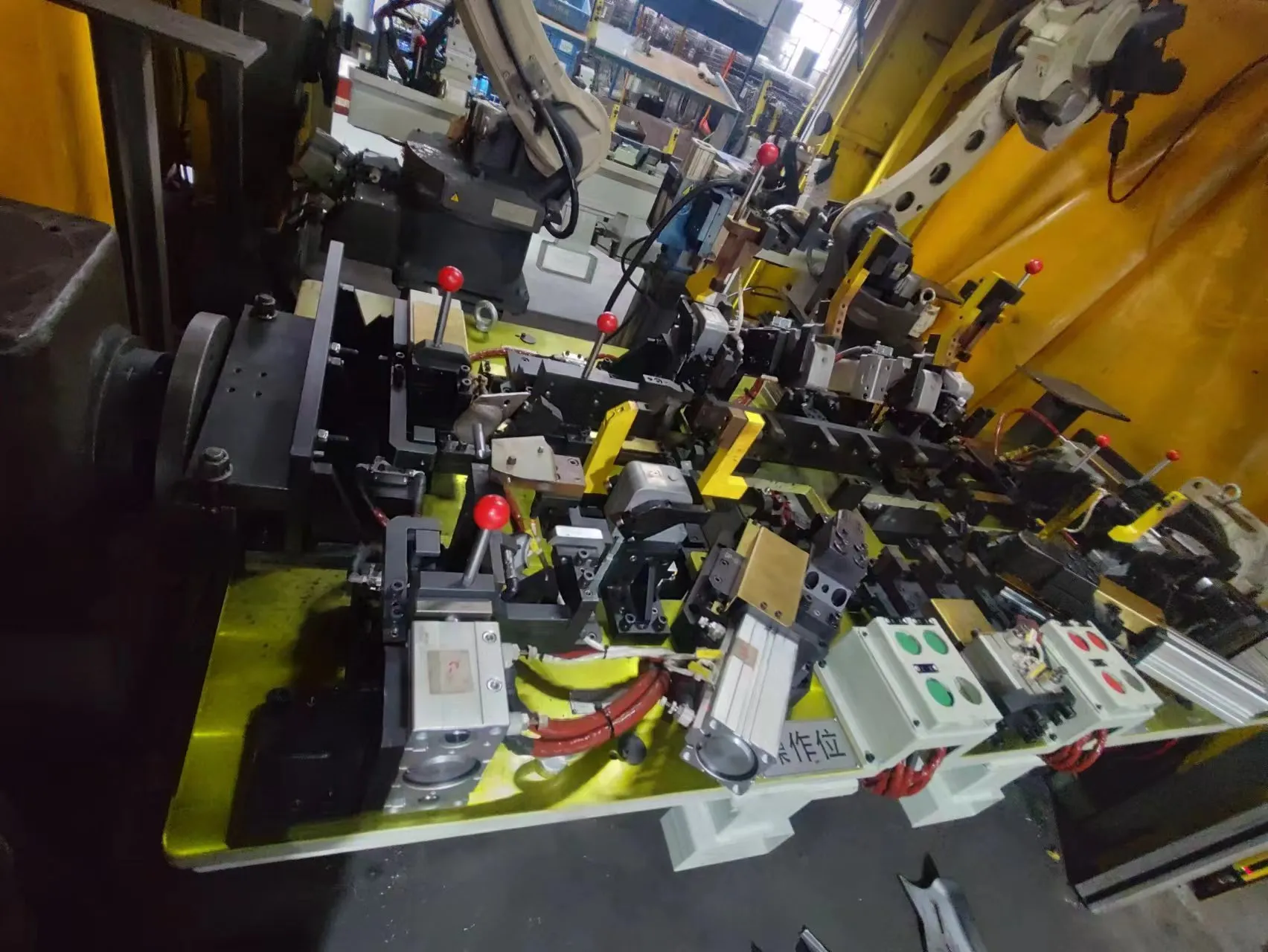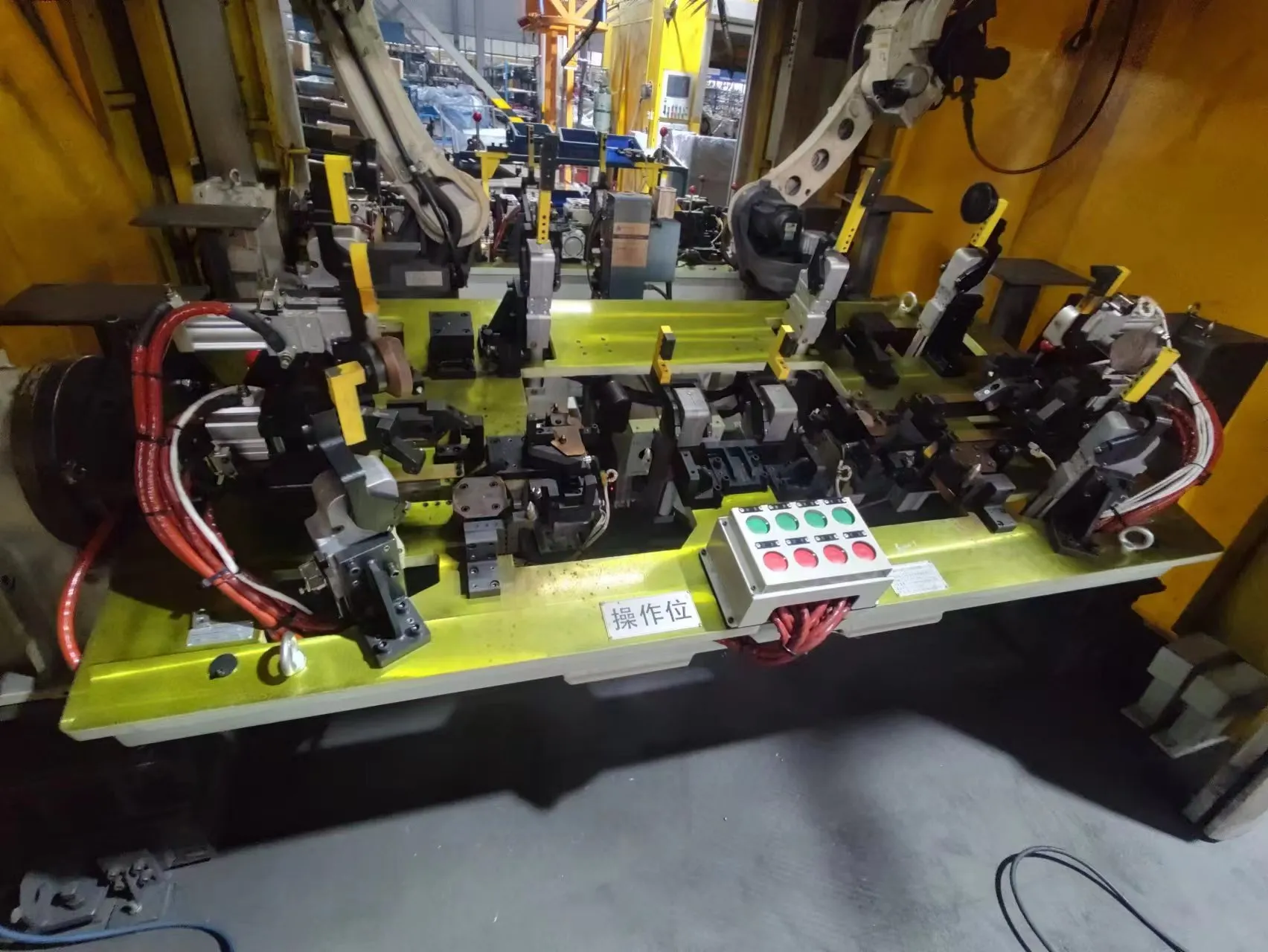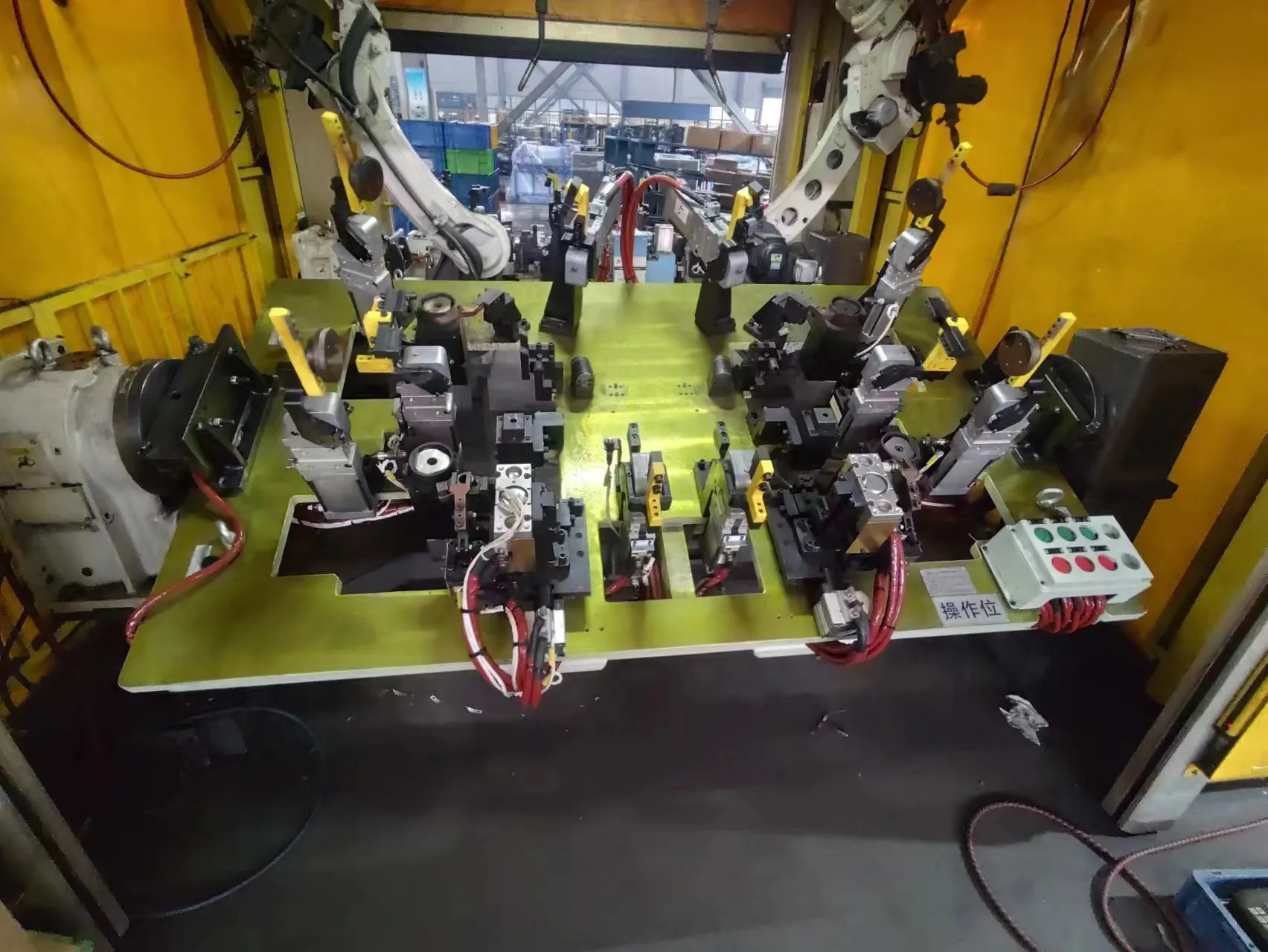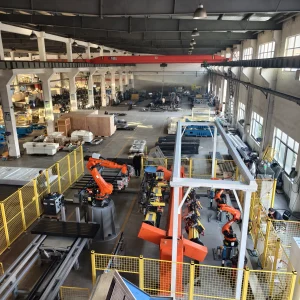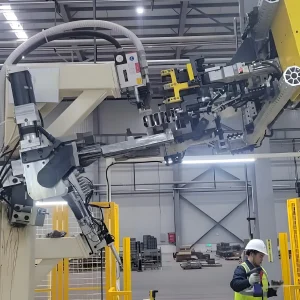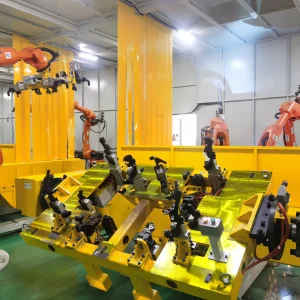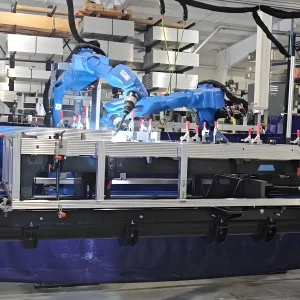Description
Heavy-Duty Frame and Stability-Oriented Architecture
The structural backbone of a car subframe welding fixture is its robust frame, engineered from high-grade steel or reinforced aluminum alloys to endure extreme mechanical loads and thermal stresses during welding. The frame’s rigid design ensures dimensional stability, preventing flexing or vibration that could compromise alignment accuracy. Cross-bracing and reinforced joints are strategically incorporated to distribute clamping forces evenly across the fixture. This stability is critical for maintaining the subframe’s geometric integrity, particularly when welding high-strength materials like boron steel or aluminum, which require precise heat management to avoid warping.
Precision Clamping and Positioning Systems
Central to the fixture’s functionality are its clamping mechanisms, which combine hydraulic or pneumatic actuators with modular jaws to securely hold subframe components (e.g., crossmembers, suspension mounts) in their exact positions. Hardened steel locator pins and adjustable datum blocks align parts within tight tolerances (≤0.2 mm), ensuring compliance with design specifications. Some fixtures integrate laser alignment systems or optical sensors to verify component placement before welding. Quick-release clamps and retractable arms allow unobstructed access for welding robots, while self-centering mechanisms adapt to minor part variations, enhancing compatibility with mixed-material assemblies.
Modular and Scalable Design for Flexibility
Modern subframe welding fixtures emphasize modularity, featuring interchangeable components such as swappable brackets, height-adjustable supports, and scalable clamping units. This modularity enables rapid reconfiguration for different vehicle models or subframe designs-essential for automakers producing both electric vehicles (EVs) and internal combustion engine (ICE) cars. For example, EV subframes often require additional fixtures for battery tray mounts, which can be integrated into the modular system. Servo-driven adjusters and programmable logic controllers (PLCs) allow automated repositioning of clamps and locators, reducing setup time during production line changeovers.
Integrated Safety and Ergonomic Optimization
Safety is embedded into the fixture’s design through fail-safe locking mechanisms, overload sensors, and emergency stop functions. Protective guards or light curtains shield operators from moving parts in semi-automated setups. Ergonomics are prioritized with adjustable working heights, accessible control panels, and color-coded clamping indicators to minimize operator fatigue. For robotic welding, the fixture’s layout ensures collision-free movement of robotic arms, with clamps retracting automatically during toolpath transitions. Heat-resistant coatings or water-cooling channels are often added to critical areas to mitigate thermal degradation from prolonged welding cycles.
Smart Technology and Industry 4.0 Integration
Advanced subframe welding fixtures incorporate IoT-enabled sensors and data interfaces to monitor real-time parameters such as clamp pressure, alignment accuracy, and thermal expansion. Machine learning algorithms analyze weld quality data to predict and correct deviations, reducing defects. RFID tags or QR codes on fixture components enable traceability and predictive maintenance scheduling. Some systems support augmented reality (AR) overlays to guide technicians during calibration or repairs. These smart features align with Industry 4.0 standards, enabling seamless integration into digital twin frameworks and automated production ecosystems, particularly for EV subframes requiring ultra-precision in battery and motor mounting points.
